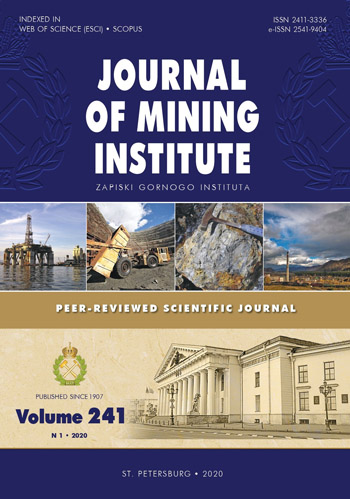Study on influence of two-phase filtration transformation on formation of zones of undeveloped oil reserves
- 1 — Tyumen Industrial University
- 2 — Tyumen Industrial University
- 3 — Tyumen Industrial University
Abstract
In order to study the process of fluid filtration during flooding of an oil field, article uses Rapoport – Lis model of non-piston oil displacement by water. During plane-radial filtration in a homogeneous formation, radii of disturbance zones are determined with and without taking into account the end effect. Influence of changes in value of capillary pressure gradient on distribution of water saturation coefficient in the non-piston displacement zone for high and low permeability reservoirs is revealed. Application of an element model for a five-point injection and production well placement system showed that, using traditional flooding technology, flat-radial fluid filtration is transformed into rectilinear-parallel. At solving equation of water saturation, Barenblatt method of integral relations was used, which allows determining the transformation time. By solving the saturation equation for rectilinear-parallel filtration, change in the value of water saturation coefficient at bottomhole of production well for an unlimited and closed deposit is determined. It is shown that an increase in water cut coefficient of a production well is possible only for a closed formation. To determine coefficient of water saturation in a closed deposit, a differential equation with variable coefficients is obtained, an iterative solution method is proposed. In the element of the five-point system, oil-saturated zones not covered by development were identified. For channels of low filtration resistance, conditions for their location in horizontal and vertical planes are established. It is shown that, at maintaining formation pressure, there is an isobar line in formation, corresponding to initial formation pressure, location of which determines direction of fluid crossflow rates. Intensity of crossflows affects application efficiency of hydrodynamic, physical and chemical, thermal and other methods of enhanced oil recovery.
